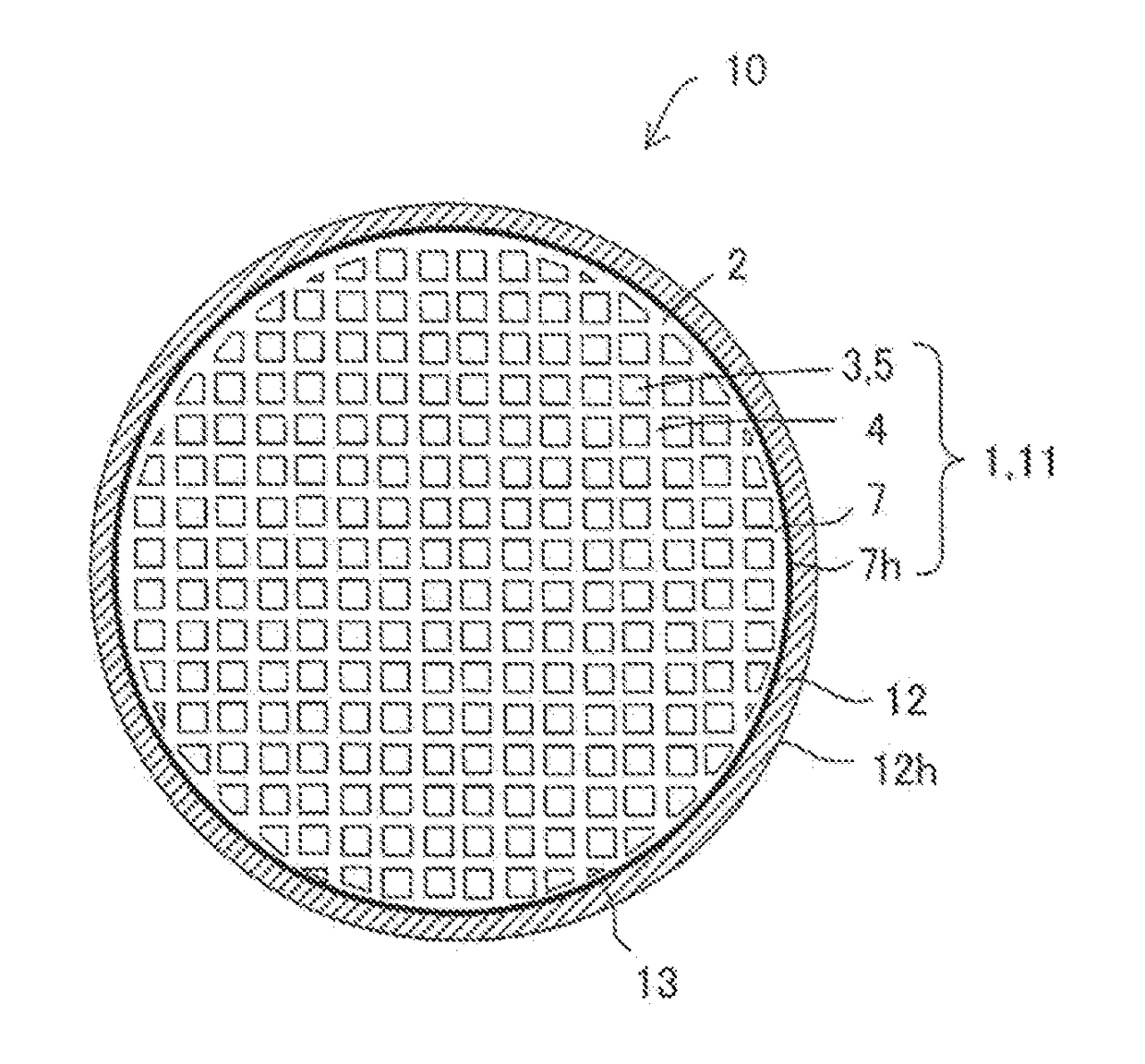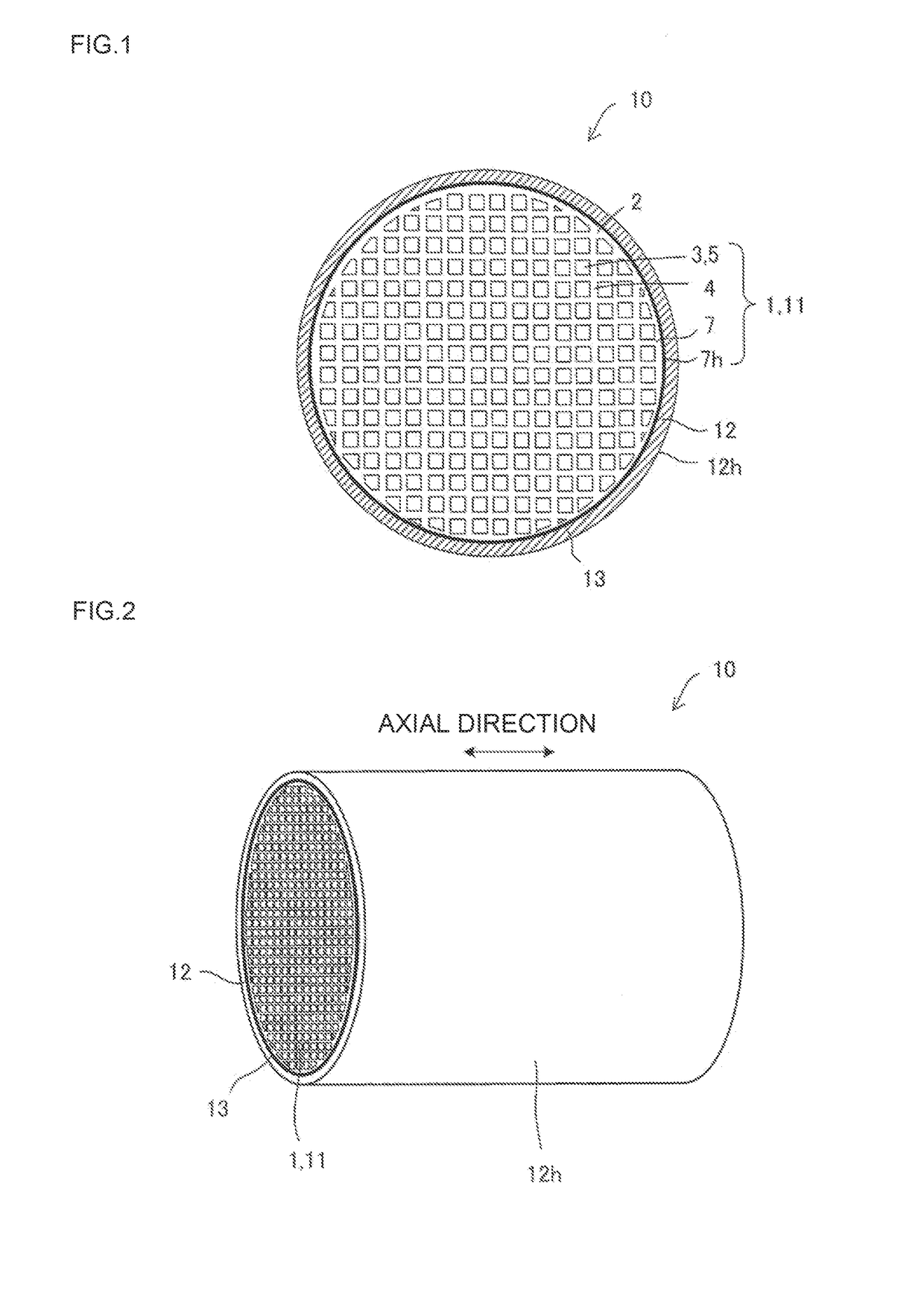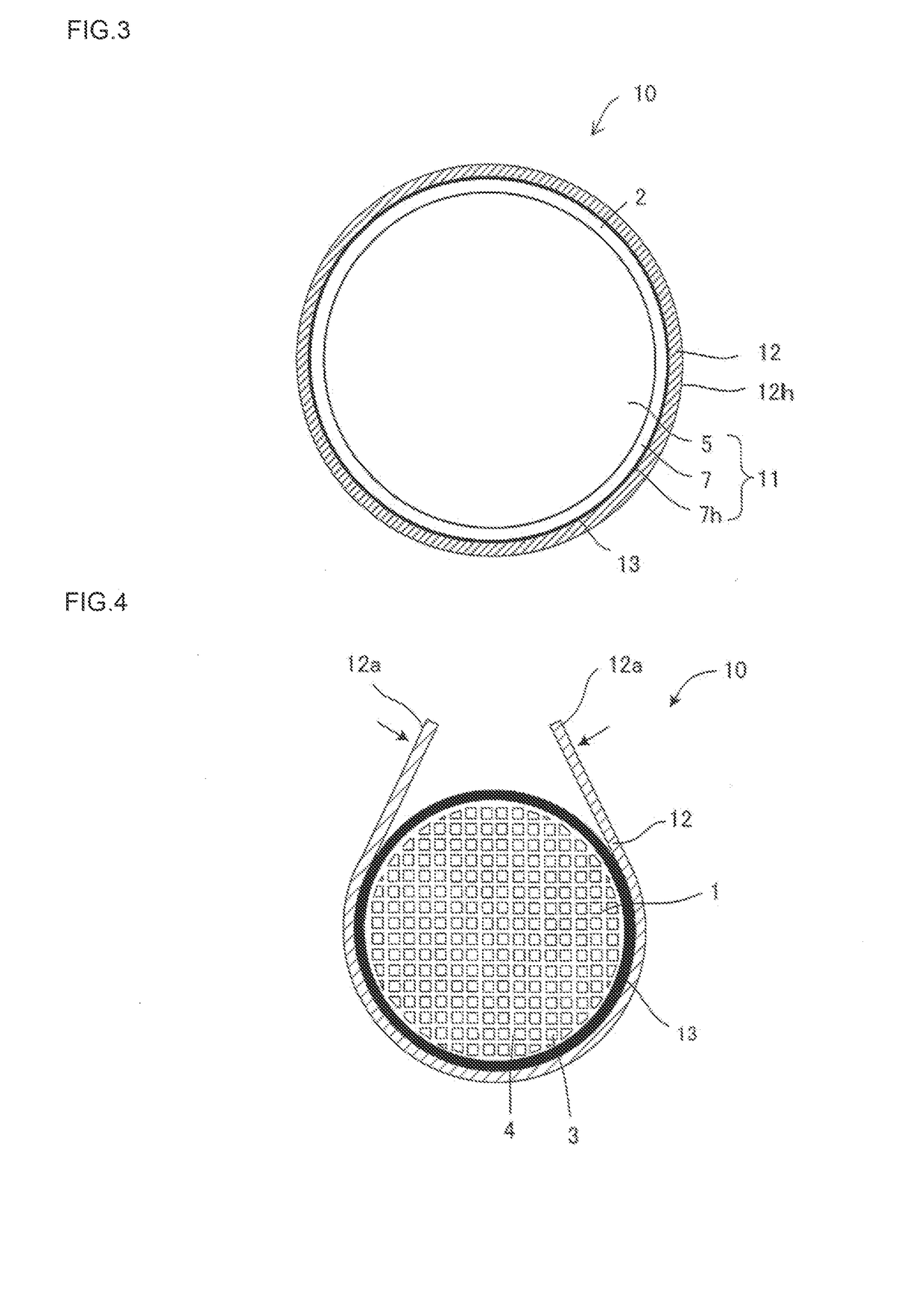Heat conduction member
a heat conductance and member technology, applied in the field of heat conductance members, can solve the problems of difficult to secure wettability, reduce durability, and breakage of the honeycomb structure, and achieve the effects of improving heat conductance, improving adhesion, and efficient discharg
- Summary
- Abstract
- Description
- Claims
- Application Information
AI Technical Summary
Benefits of technology
Problems solved by technology
Method used
Image
Examples
example 1
Preparation of Kneaded Material
[0093]In the first place, 70 mass % of SiC powder having an average particle diameter of 45 μm, 10 mass % of SiC powder having an average particle diameter of 35 μm, and 20 mass % of SiC powder having an average particle diameter of 5 μm were mixed together to prepare a mixture of SiC powders. To 100 parts by mass of the mixture of SiC powders were mixed 4 parts by mass of a binder and water, and they were kneaded with a kneader to obtain a kneaded material. The kneaded material was put in a vacuum kneader to manufacture a circular columnar kneaded material.
[0094](Extrusion)
[0095]Next, the kneaded material was extruded to form a honeycomb formed body. In the extrusion, by selecting a die and a jig each having an appropriate form, the shape and thickness of the outer peripheral wall, the thickness of the partition wall, the cell shape, and the cell density were made desirable. A die made of superhard alloy which hardly abrades away was used. Regarding t...
examples 1 to 9
, Reference Example, Comparative Examples 1 and 2
[0112]Furthermore, each of the other intermediate members 13 was subjected to the same heat transfer test to obtain the heat transfer efficiency. In addition, after the heat transfer efficiency test, presence / absence of crack generation in the cylindrical ceramic body 11 was checked. It is shown in Table 2. Example 1, Reference Example, and Comparative Example 1 of Table 2 were the same as in Table 1. The structure was “cylindrical ceramic body 11+intermediate member 13+metal pipe 12” except for Reference Example and Comparative Example 1. The structure of Reference Example was a single body of a cylindrical ceramic body 11, and the structure of Comparative Example 1 was cylindrical ceramic body 11+metal pipe 12 with no intermediate member 13.
[0113]
TABLE 2Evaluation resultIntermediate memberHeatPresence / Young'stransferAbsencemodulusThicknessefficiencyof crackMaterialGPamm%generationExample 1Graphite0.10.258.2AbsentsheetExample 2Graphi...
PUM
| Property | Measurement | Unit |
|---|---|---|
| Young's modulus | aaaaa | aaaaa |
| Young's modulus | aaaaa | aaaaa |
| thickness | aaaaa | aaaaa |
Abstract
Description
Claims
Application Information
 Login to View More
Login to View More - R&D
- Intellectual Property
- Life Sciences
- Materials
- Tech Scout
- Unparalleled Data Quality
- Higher Quality Content
- 60% Fewer Hallucinations
Browse by: Latest US Patents, China's latest patents, Technical Efficacy Thesaurus, Application Domain, Technology Topic, Popular Technical Reports.
© 2025 PatSnap. All rights reserved.Legal|Privacy policy|Modern Slavery Act Transparency Statement|Sitemap|About US| Contact US: help@patsnap.com



